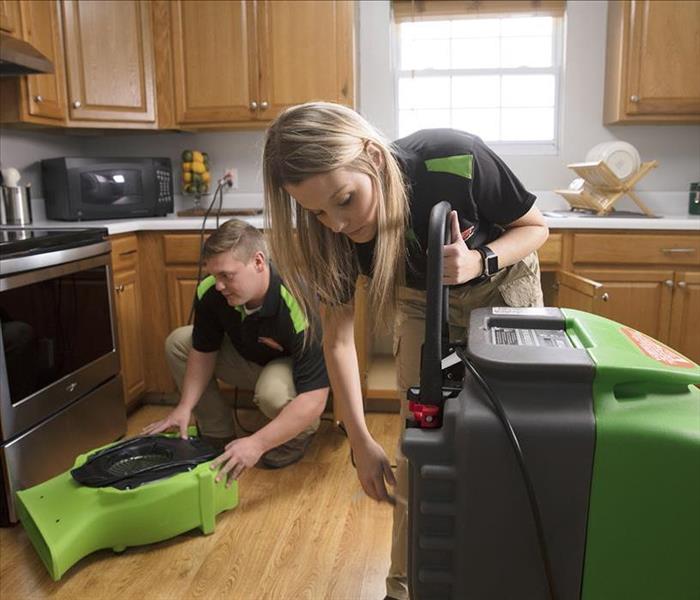9 Ways to Keep Your Home Safe From Water Damage
3/13/2022 (Permalink)
- You should be aware of the location of the stopcock. Ensure that not only you but also your family members are aware of its location. A severe leak or rupture can cause significant damage in minutes. It is critical to understand where and how to turn off the water supply.
- Check for leaks ahead of time. Minor leaks can go undetected for a long time and cause significant damage if left unchecked. Consider that a dripping faucet can waste up to 57 gallons of water per week. Look for signs of stray water beneath sinks and around appliances such as dishwashers and washing machines.
- Check that your sump pump is operational. The sump pump, which is common in basement homes, plays an important role in ensuring that your basement does not flood after prolonged periods of rain. If you have one, make sure it's well-maintained and serviced at least once a year.
- Keep debris out of your gutters. While leaves are the most common cause of blocked gutters, this isn't just an autumnal problem. Moss and weeds are frequently discovered to be a major cause. Blocked gutters play a significant role in damp problems. If you see water running down the side of your house or if your gutters appear to be sagging, they're probably blocked and need to be cleaned.
- Inspect your roof from the inside out. Examine the inside of your attic for signs of water leaking through the roof. Examine the joists for damp spots and the plaster for tea-colored stains. Outside, look for visible damage to the roof and make sure the flashing around any chimneys is in good condition.
- Keep your pipes from freezing. Even if you plan to be away, use a smart thermostat to keep your home at a minimum temperature of at least 10 degrees Celsius. Warm water must be able to circulate through pipes to avoid freezing damage. If a property will be unoccupied for an extended period of time, turn off the water supply at the stopcock and consider draining the system so that no water remains in the system.
- Pipes that are exposed should be properly insulated. Snap-on pipe insulation is inexpensive and effective, and it can also be used outside.
- Install a device to detect water leaks. Detection devices, which are relatively inexpensive, cut off the water supply in the event of a leak, which is critical if you leave your property vacant for extended periods of time.
- Look for any signs of moisture or mold. Damp can be detected by flaking paint or wallpaper, as well as black, speckled marks on skirting and sills. Consider adding more insulation if your walls feel cold to the touch or if you notice a musty odor. In the mornings, check windows and skylights for condensation. Its presence can indicate that your home has higher-than-average moisture levels.






 24/7 Emergency Service
24/7 Emergency Service
